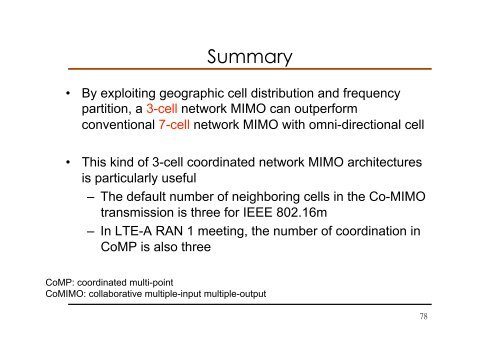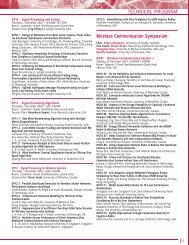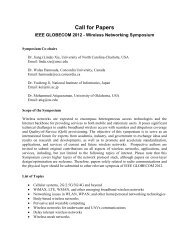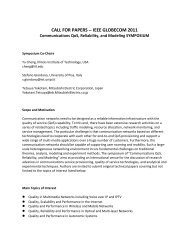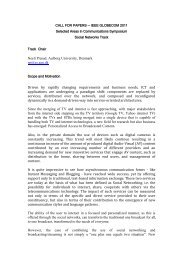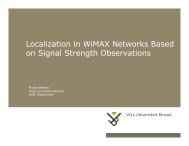Advances in Coordinated Multi-Cell Multi-User MIMO Systems
Advances in Coordinated Multi-Cell Multi-User MIMO Systems
Advances in Coordinated Multi-Cell Multi-User MIMO Systems
You also want an ePaper? Increase the reach of your titles
YUMPU automatically turns print PDFs into web optimized ePapers that Google loves.
Summary<br />
• By exploit<strong>in</strong>g geographic cell distribution and frequency<br />
partition, a 3-cell network <strong>MIMO</strong> can outperform<br />
conventional 7-cell network <strong>MIMO</strong> with omni-directional cell<br />
• This k<strong>in</strong>d of 3-cell coord<strong>in</strong>ated network <strong>MIMO</strong> architectures<br />
is particularly useful<br />
– The default number of neighbor<strong>in</strong>g cells <strong>in</strong> the Co-<strong>MIMO</strong><br />
transmission is three for IEEE 802.16m<br />
– In LTE-A RAN 1 meet<strong>in</strong>g, the number of coord<strong>in</strong>ation <strong>in</strong><br />
CoMP is also three<br />
CoMP: coord<strong>in</strong>ated multi-po<strong>in</strong>t<br />
Co<strong>MIMO</strong>: collaborative multiple-<strong>in</strong>put multiple-output


